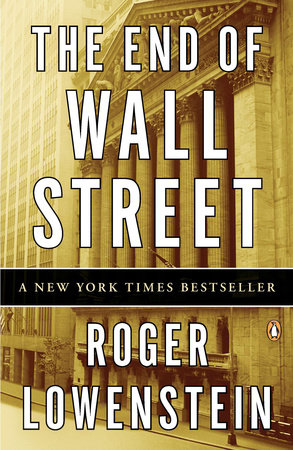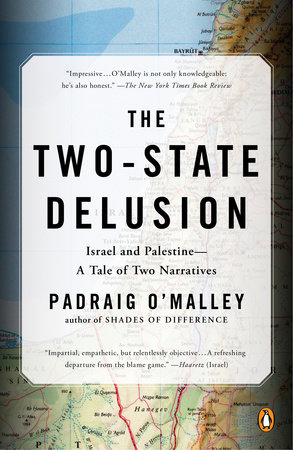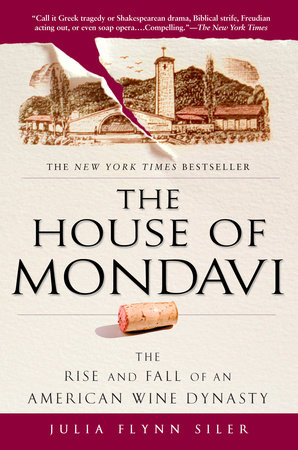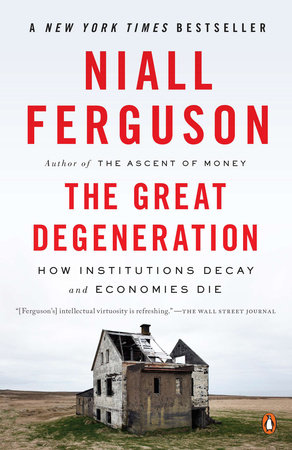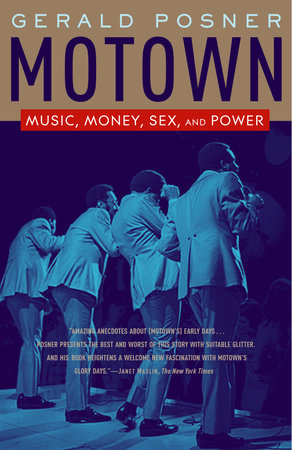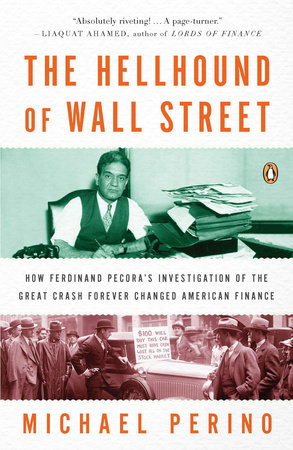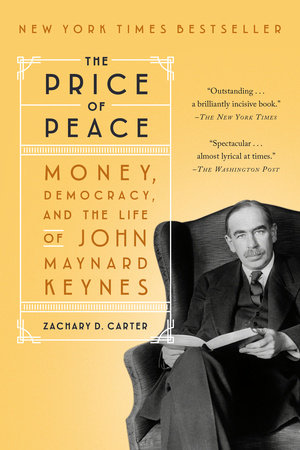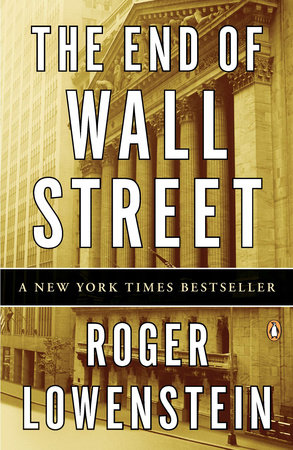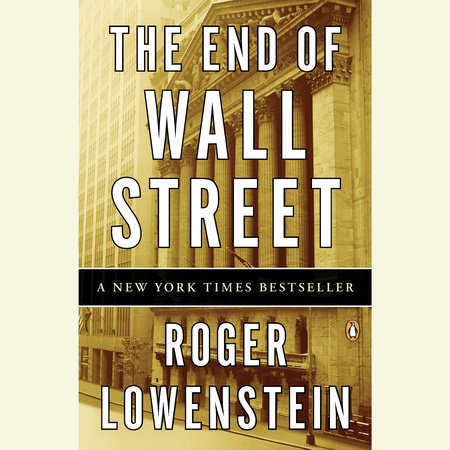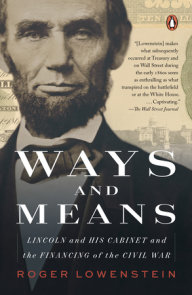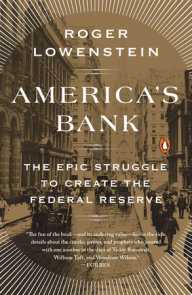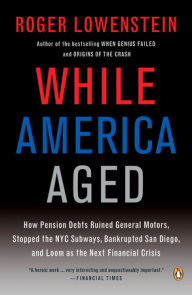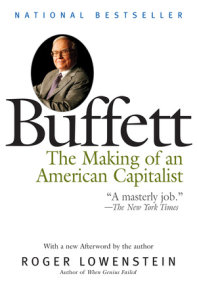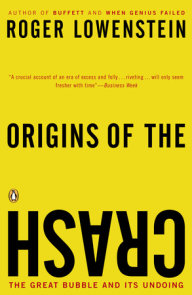Author Q&A
You started writing this book in 2008 shortly after the failure of Lehman Brothers. There were bound to be other authors tackling the financial crisis – so what inspired you to write The End of Wall Street? What story did you think wasn’t being told by others?
Actually, I had been thinking about this well before Lehman. In 2007 and early 2008, when I did a magazine cover on Ben Bernanke, it was obvious that he — like the financial system he oversaw — was facing truly unique difficulties. I was also thinking, and writing, about how the credit agencies had failed, utterly, to understand the rottenness underneath residential mortgages. Then, in the spring of 2008, when Bear Stearns collapsed, my editor suggested I write a book. I was intrigued but I didn’t think the subject was quite ripe. We both thought we were in the midst of something big, but I wasn’t sure Bear Stearns was the final, or climactic, act. Come September, when Lehman failed (and in the same week, Merrill was acquired and AIG was rescued) it was obviously show-time. What I wanted to do, as distinct, from some of the other writers, was to go back, and relate Lehman and AIG to all these other currents that had been brewing for so long. And really that had been brewing, in a theoretical sense, since the collapse of Long-Term Capital Management, which I had written about in When Genius Failed in 1999. Because in retrospect, LTCM was a miniature version of the crash of 2008. And the 2008 bust was the culmination of the financial excesses that have absorbed the better part of my career.
Tell us about the title of your book.
It works on two levels. Firstly, there was a period in the fall of 2008 when it felt, literally, like the “end.” I wanted people to remember that — that in the midst of this storm, people weren’t sure our financial system would survive. The collapse was that big. Secondly, you can read the title as the end of Wall Street as we knew it. In this sense, I am referring to trading vehicles, leverage levels, risk-taking, degrees of government supervision, and so forth, but above all to a mindset of complacency that justified the extraordinary speculation prevalent during the middle-to-late 2000s. That mindset — that every risk, every investment will always work out: that we have nothing to worry about — is gone, kaput, over. By analogy, although we have not suffered any terrorist attacks (on U.S. soil) since 2001, the country, or the generation that lived through it, will never feel as safe as it did before. We’re not invulnerable and we know it. 2008 ripped away the feeling of financial invulnerability.
Though the economy was struggling prior to September 2008, conventional wisdom holds that the crisis reached a critical mass only with the failure of Lehman Brothers. You point out that the collapse started much earlier. Explain.
When my wife was reading the manuscript, she kept saying, “Are you sure all this stuff was happening in 2007?” It’s amazing how early the crisis really began. By the time of Lehman, home prices had been falling for more than two years. Dozens and probably scores of subprime companies had already failed. The foreclosure rate had quadrupled. Wall Street stock prices had crashed. Job totals had fallen for eight straight months — all this happened before Lehman. And of course, Bear Stearns, Fannie and Freddie had all been forced to seek a bailout. Lehman’s bankruptcy brought the crisis home to the evening news cycle but the crisis was already very, very far along.
Who should have recognized the advance warning signs? Why didn’t they?
Well, you want to be careful here, because everyone is a genius in retrospect. But certainly, Ben Bernanke knew we had a very bad problem in mortgages, subprimes in particular, and failed to see how thoroughly mortgages were implicated throughout the economy. Others, such as the investor Bob Rodriguez, a key character in the book, recognized in the summer of 2007 that since financial firms were holding so many mortgages, they would be at risk. And if financial firms were at risk, then the overall economy would suffer. You would have hoped that the Fed, with all its resources, would have done better. The “why” part of the question is tougher. But I think the Fed, going back to Greenspan’s era, had grown very trusting of Wall Street and of what I call the new finance: all the computer models that Wall Street relies on to forecast. Basically, these models say, “if something hasn’t happened before, then it won’t happen now.” For example, we never had foreclosure rates go beyond a few percent, so why should they now? It’s a flawed system. On that basis there was nothing to worry about in December 1941 because Pearl Harbor had never been attacked before. Models look backward, not forward. I think the Fed grew too trusting and too complacent.
You compare Angelo Mozilo, the CEO of Countrywide Financial, and his stand on subprime loans to Michael Milken in the junk bond era.
This is a very important point, because it’s not just Mozilo and Milken — the theme of lending to the masses and seemingly nurturing a new era of prosperity runs through so many speculative eras. But to take those two, Milken, in the junk bond era of the 1980s, said ‘lend to everybody’ — every company that is. The pitch was that not just investment grade companies, but every company, should be credit-worthy. So he peddled their bonds. And Mozilo, as he built his mortgage empire, believed that every individual, even subprime borrowers, should get a mortgage. In fact, he said even people who put no money down should get a mortgage. And pretty soon, they were. It’s a very American ideal — sharing the wealth, democratizing capital. In 1929, a financier named John Jakob Raskob wrote an article in the Ladies Home Journal entitled, “Everybody Ought to be Rich.” He was arguing for broader participation in the stock market. It was a nice idea. But the market crashed two months later. It was built on leverage and speculation as opposed to real, enduring values. Same thing in recent times. Milken and Mozilo each believed that a stressed-out borrower could always work their way of a jam by refinancing — i.e., by borrowing from someone else. But of course, this is merely passing the bad coin. At some point, the game stops and if the borrower isn’t solvent they go down.
You go into detail in your book about how Moody’s and other rating agencies work. What do you think that people will be most surprised to learn about Moody’s and its role in the crisis?
It’s the basic fact of how they are compensated — that the rating agencies were paid by the people who were designing the securities. So, say, Wall Street firms that wanted to sell mortgage bonds would go to one of the big agencies and request a rating. And if they didn’t like the result, they didn’t have to pay a dime; they could go to a competitor agency. So imagine the pressure on a Moodys, an S&P, a Fitch, knowing they only got paid if they pleased the client. It was a system designed to fail. I say in the book it was like trusting taverns to set the drinking age. Also, I think, it’s surprising to learn just how the Wall Street firms’ hands, helping the banks structure bonds in a way that would guarantee them the desired ratings.
If you had to pinpoint one fatal error made by Wall Street leading up to the 2008 financial collapse, what would it be?
The firms borrowed too much money — way too much. We expect that banks will make mistakes; everybody does. But leverage magnifies the impact of the mistake. It takes away your cushion. If you’re in a car accident and you’re doing 30 m.p.h., you have a lot better chance of surviving then if you’re doing 60 m.p.h. Well, leverage is the great accelerator of the financial system. And the big Wall Street banks were effectively doing 80 or 90.
What is your biggest criticism of Paulson and Bernanke?
As a Fed governor, before becoming chairman, Bernanke was very cavalier about the hyper-stimulative effect of low interest rates. He bought into the Greenspan doctrine of easy money, and of refusing to “prick” speculative bubbles. Bernanke was the country’s top banking regulator and he didn’t realize that bankers had, in effect lost their heads; they were dishing out mortgages without any basis in economics. Later, as the crisis was brewing, Bernanke was very late to grasp the severity. Paulson was as well. Also, I think that after they were criticized for letting Lehman fail, both regulators got hooked on the bailout response. The number of bailouts was stunning, and it has greatly contributed to the presumption of a ‘too big, or too important, to fail’ mentality that we are struggling to break today. But we shouldn’t forget that Paulson and Bernanke also did many things right. They were dealing with an unprecedented financial storm.
Many believe that Paulson reversed his ‘no-bailout’ policy in the case of AIG to save Goldman Sachs. You argue that this is not true.
This is a red herring and a pretty despicable one. Paulson was operating on the fly for months on end. He wasn’t sleeping, he was puking in the office restroom from stress. No Treasury Secretary ever dealt with as many crises in as short a time period as he. He certainly made plenty of questionable moves, and plenty of good ones. But he was operating from the right motives. I say that from knowing him and from looking at the facts. Goldman (as documented in the book) was not at risk — or not thought to be at risk — when AIG went down. And the September bailout didn’t save Goldman a whole lot in any case. What the conspiratorialists do is overlay, in retrospect, very fine theories and motives on actors who were basically operating in panic mode. I looked at what it was like for them, as human beings, in real time. And they were freaking out. They had decided to let Lehman fail and only a day and a half later the financial world was in full-scale meltdown. And AIG was far bigger, and far more complicated, than Lehman. The thought of a second and worse bankruptcy was intolerable.
I said the worst mistake was leverage, and therefore the most critical step is limiting leverage. If that were done, even if banks were to make new mistakes — and they will — the impact would be less severe. Restricting leverage necessarily involves getting a handle on derivatives, which are tools for assuming financial risk in an off-balance sheet form, so that not just traditional borrowing but also exposure off-balance sheet is regulated. And the government should think hard about whether some of these derivatives, such as credit default swaps, are necessary or beneficial — or on a net basis do more harm than good. Another step is reforming the credit rating agencies. Another is dealing with the mentality that government bailouts will always be available — which encourages investors to lend to unworthy or shaky firms. The best remedy, I think, would be to prevent regulated banks from acting like hedge funds or otherwise taking on too much trading risk. Finally, the Fed, I really believe, should abandon the Greenspan-Bernanke doctrine and admit that part of its mission should be to temper asset bubbles.
